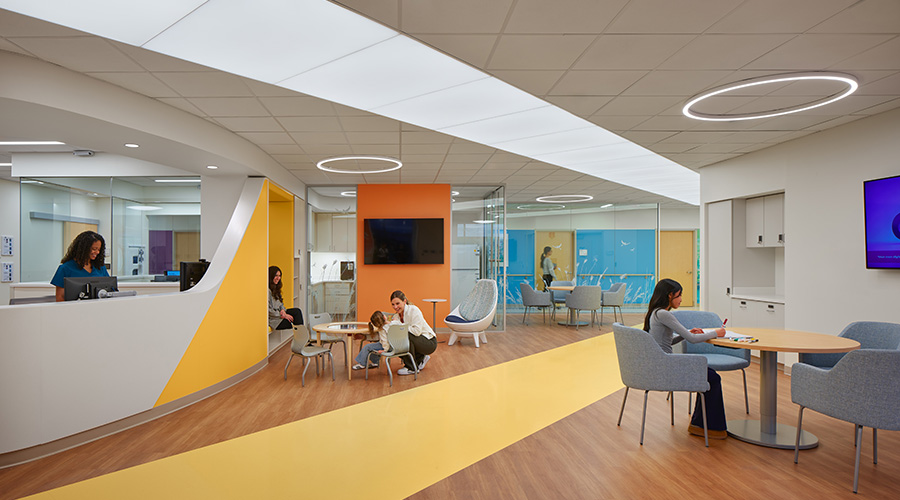In a perfect world, healthcare organizations would have unlimited resources to address the growing violence challenging other sectors, including education and social services. Sadly, the stark reality is that workers in healthcare facilities are increasingly affected by violence, and the issue is pushing everyone to the brink.
An estimated 73 percent of nonfatal workplace injuries occur in healthcare settings, with workers at significant risk of physical and verbal assaults. Nearly one-half of hospital nurses — 48 percent — reported increases in workplace violence, according to a 2022 survey from National Nurses United.
In the face of this rising violence, security teams play a critical role. The numbers are staggering, but there are strategies healthcare facilities managers can adopt to augment the hard work teams are doing and create holistic change.
As the Joint Commission recently concluded, security measures — including increased surveillance, monitoring and detection — are not as effective when used as stand-alone solutions. While devices, equipment and technology are vital tools, like the delivery of care, they require human skills to reach full efficacy.
Leading healthcare organizations understand that their approaches to workplace violence mitigation includes taking a holistic approach to workforce safety strategies. This process begins by recognizing that everyone in an organization has a role to play.
Greeters, front desk workers, environmental service, nutritional service, human resources and other non-clinical staff have a role to play, albeit one that is different than that of security professionals, clinical technicians, nurses and providers. One common competency for all these roles is the ability to recognize when someone is in distress and, just as importantly, an understanding of what to do.
Imagine the impact of a diverse set of professionals and teams working together, using a common language and applying congruent tools, policies and procedures to create a culture of safety. It is not a pipe dream. It is becoming more of a reality every day, and it includes:
- Addressing the needs of the individual. Emphasizing a person-centered approach can ensure an inclusive and culturally sensitive approach to a person displaying crisis behavior.
- Teaching to explore the reasons behind the behaviors. Understanding the effects of trauma and the psychology of the brain on the person in crisis and the individual responding begins by understanding the way a person’s own behavior might affect the behavior of the individual in crisis.
- Recognizing and responding to defensive behaviors. Helping teams understand why, how and when to apply limit-setting strategies when verbally intervening to de-escalate defensive behaviors and to recognize opportunities for post-crisis learning.
- Minimizing physical interventions. Teaching employees when and how to use safety interventions for escalated behaviors that pose a risk to the individual or others. (Hint: always, always, always as a last resort)
Hospital staff are the front line of interactions with patients, their families and the community. When managers support the existing security infrastructure with individuals and teams empowered to recognize and address the tension and anxiety that can lead to escalated crisis situations, they proactively create an environment of safety and security based on empathy and compassion.
Creating safety
Conflict can emerge for a variety of reasons, ranging from previous trauma, escalated behavior due to miscommunication and perceptions of micro-aggressions, along with the stress, anxiety and frustration individuals can experience from a complex healthcare environment.
Communicating expectations for staff, patients and visitors, coordinating with law enforcement and hiring and managing staff, and using technological enhancements can contribute to the environment of safety.
But there are effective, proactive actions operational and clinical leaders can take as part of their workforce safety program, including introducing de-escalation training designed to help staff bring peaceful resolution to situations that could otherwise turn to conflict. The result can be transformational, increasing feelings of safety for everyone, staff, patients and visitors alike.
Related: De-escalating Workplace Violence: A Training Infrastructure
Leading healthcare organizations gain the most significant impacts when their workforce safety training program:
- Establishes a common language across all departments. Implement training that is designed specifically for healthcare professionals to create a common language so the team improves communication before, during and after a crisis situation. When team members use a common language and a shared foundation of training, it improves teamwork, including when and how to call for and respond to help, and the reporting that is crucial to understanding and improving the challenges the organization might face.
- Creates alignment among leaders. Uniting employees responsible for development, management and execution of the workplace violence committee’s plans gives them ownership over the de-escalation training program. This step nurtures an environment where the necessary behavioral change can become a natural part of the work culture.
- Educates people to recognize micro-aggressions. This step helps employees identify what can cause moments of tension and provides the skills necessary to help manage the anxiety and frustration that can trigger trauma.
- Makes an immediate impact throughout an organization. Effective de-escalation training should enable employees to quickly practice and pass on what they learn using train-the-trainer methods that help spark adoption throughout teams and departments to improve workplace interactions and organization-wide culture. With an effective audit, managers can pinpoint the most appropriate training for staff across the organization.
- Creates a positive workplace culture. De-escalation training helps people feel safer in their workplaces because they are empowered with tools and understand that the organization is committed to creating solutions and backing them up. The training helps increase employee satisfaction, aids in recruitment and retention and pays dividends by reducing turnover, building confidence in leadership, management and colleagues and improving patient care.
As leaders in healthcare, part of the mission is to enhance the care, welfare, safety and security for the entire organization. The result is an environment of care that allows all staff to focus on the health, dignity, respect and well-being of everyone. Working together and empowering each other can reduce the fear and anxiety that leads to violence and creates a safer environment for healthcare professionals.
AlGene Caraulia is vice president of integration and sustainability with the Crisis Prevention Institute.

 Contaminants Under Foot: A Closer Look at Patient Room Floors
Contaminants Under Foot: A Closer Look at Patient Room Floors Power Outages Largely Driven by Extreme Weather Events
Power Outages Largely Driven by Extreme Weather Events Nemours Children's Health Opens New Moseley Foundation Institute Hospital
Nemours Children's Health Opens New Moseley Foundation Institute Hospital Code Compliance Isn't Enough for Healthcare Resilience
Code Compliance Isn't Enough for Healthcare Resilience Ribbon Cutting Marks First Phase Completion for New Montefiore Einstein Facility
Ribbon Cutting Marks First Phase Completion for New Montefiore Einstein Facility